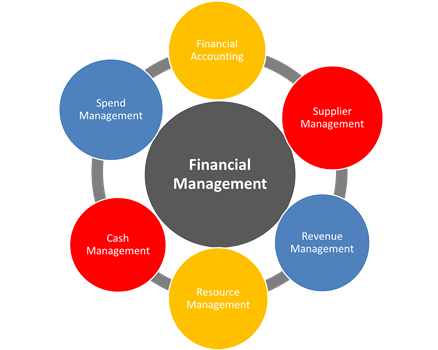Management Consulting Financial Management
Post on: 2 Апрель, 2015 No Comment

Question
Dear Sir,
Good Day,
Sir,need your help kindly guide for following questions
Q-1) What are the techniques of Capital Budgeting? Explain in brief.
Q-2) What are the approaches (models) of Dividend Policy.
Q-3) Write a note on Stock Markets in India.
Q-4) Explain Inventory Management, which is a part of Working Capital
Q-8) Explain the concept of break even analysis.
Answer
Q-1) What are the techniques of Capital Budgeting? Explain in brief.
img
Techniques of capital budgeting:
Capital budgeting is a mathematical concept in the sense that we have to use different
quantitative investments criteria to evaluate whether an opportunity is worth investing in or not.
Some of these techniques of capital budgeting are as under
1. Pay back period
2. Return on investment (ROI)
3. Net Present Value (NPV)
4. Profitability Index (PI)
5. Internal Rate of Return (IRR)
We will assume that the interest rate, or the discount rate, or the required of return, which we use In calculating the net present value is given, later on, when we will discuss the concept of risk, we would see how the discount rate is calculated .
For now, let us talk about the pay back period.
Pay back period:
In this technique, we try to figure out how long it would take to recover the invested capital through positive cash flows of the business.
Reverting back to the cafe example, an initial investment of Rs. 200,000 is required to start the business; Rs 10,000 per month are expected to be earned for the first year, and Rs 20,000 would be earned every month in the second year.
Now according to the aforementioned assumptions, in the first year, you earn Rs.10, 000 per month, which make Rs. 120,000 for the year (twelve months). Since you had invested Rs. 200,000 initially of which Rs. 120,000 have been recovered in the first year, you are still Rs.80, 000 short of
recovering your initial investment. In the second year, you would be earning Rs. 20,000 per month, so the remaining Rs. 80,000 can be recovered in the next four months. We can say that the initial invested
capital can be recovered in 16 months, or the payback period for this investment is 16 months. The shorter the payback period of a project, the more an investor would be willing to invest his money in the project.
While the payback period is a simple and straightforward method for analyzing a capital
budgeting proposal, it has certain limitations. First and the foremost problem is that it does not take into account the concept of time value of money. The cash flows are considered regardless of the time in
which they are occurring. You must have noticed that we have not used any interest rate while making calculation.
Now, let us talk about the next budgeting criteria called return on investment.
Return on Investments:
The concept of return on investment loosely defined, as there are a number of ratios that can be used to analyze return on investment. However, in capital budgeting it implies the annual average cash flow a business is making as a percentage of investment. In other words, it is an average percentage of
investment recovered in cash every year.
The formula for return on investment is as follows:
ROI= (CF/n)/IO
Dividing the average annual cash flow by the initial investment, we can calculate the return on investment.
Example:
Taking the same example of a cafй, the initial investment of Rs.200,000, Rs 10,000 per month profit in the 1st year in Rs 20,000 per month profit for the second year, we can easily calculate the ROI
ROI= ((120,000+240,000)/2)/200,000= 0.90 = 90%
Where, Rs 120,000=cash flow for 1st year at Rs 10,000 per month
Rs 240,000=cash flow for the 2nd year at Rs 20,000 per month.
n=2 years
Return on Investment is also very easy to calculate, but like payback period, it does not take into account the time value of money concept.
A high ROI ratio is considered better and 90% is a very good rate of return but before
deciding whether or not this project should be taken up, we should compare this project with the alternative opportunities on hand. It is also important to take into consideration the prevailing rate of inflation in the country so that the returns could be adjusted accordingly. However, we would talk about
the inflation rate and market interest rate in more detail later.
The next and the most important criteria for evaluating a capital budgeting proposal is net present value.
Net Present Value (NPV):
NPV is a mathematical tool which uses the discounting process, something that we have found
missing in the aforementioned capital budgeting techniques. Net Present Value is defined as the value
today of the Future Incremental After-tax Net Cash Flows less the initial investment.
The formula for calculating NPV is as follows:
NPV=-IO+CFt/ (1+i) t
Where,CFt=cash flows occurring in different time periods
-IO= Initial cash outflow
i=discount /interest rate
t=year in which the cash flow takes place
Initial cash outflow, being an outflow, is always expressed as a negative figure.
NPV is considered one of the most popular capital budgeting criteria. The disadvantage with the
NPV is that it is difficult to calculate since these calculations are based on too many estimates.
In order to calculate the NPV we need to forecast the future cash flows and sales; the discount factor is
also an estimate. If the NPV of a project is more than zero, it should be accepted. If two or more projects
under contemplation, then the one with the higher NPV, should be accepted. When a company invests in
projects with positive NPV, they raise the shareholders’ wealth or company’s value. This would also
increase the market value added and the economic value added for the firm.
Example:

Taking the same example of a cafй, an initial investment of Rs.200, 000, Rs 10,000 per month
profit in the 1st year in Rs 20,000 per month profit for the second year. However, for the calculation of
the NPV we would be requiring another important input—the discount rate. Assume the discount rate is
10 percent. Ten percent is what you at least expect to earn from the business. This is the rate of return,
which you can get by simply putting your money with a bank. If the business cannot yield more than 10
percent, then it is pointless to take unnecessary headache of setting up a business and running it, since
ten percent can be earned with a no-sweat-effort of placing the money with a bank.
Where,CFt=cash flows occurring in different time periods, i.e. Rs 120,000 in the first year and Rs
240,000 in the second year
-IO= Initial cash outflow = -200,000
i=discount /interest rate = 10 percent
t= 2 years
Putting in the values in the formula
NPV=-IO+CF/i
=-200,000+120,000/(1+0.10)+240,000(1+0.10)2
= — 200,000 +
109,091
198,347
=+Rs.107438
At the end of 2nd year, the NPV is +ve, you can also solve this example by monthly
compounding if you want to have a more precise answer.
The cash flows at the end of the first year and second year will have to be brought back to the present.
The present value of the cash flows occurring at the end of the first year can be calculated by dividing
the cash flows by 1 plus discount factor as under.
120000/(1+0.10) = 109,091
The cash flow occurring at the end of the second year can be calculated by dividing the cash
flow by one plus discount factor squared.
240,000/1+(0.10)2 = 198,347
NPV=-2000000+120000/(1+0.10)+240000/(1+0.10)2
=-200000+109091+198347
=+Rs.107438 at the end of second year NPVis +ve
In other words, according to your cash flow forecast and required return, two years of running this
business is worth Rs 107,438 in cash to you today. The following diagram can explain the point further.
Investment Criteria
N.P.V (Cafй Example Cash Flow Diagram)














